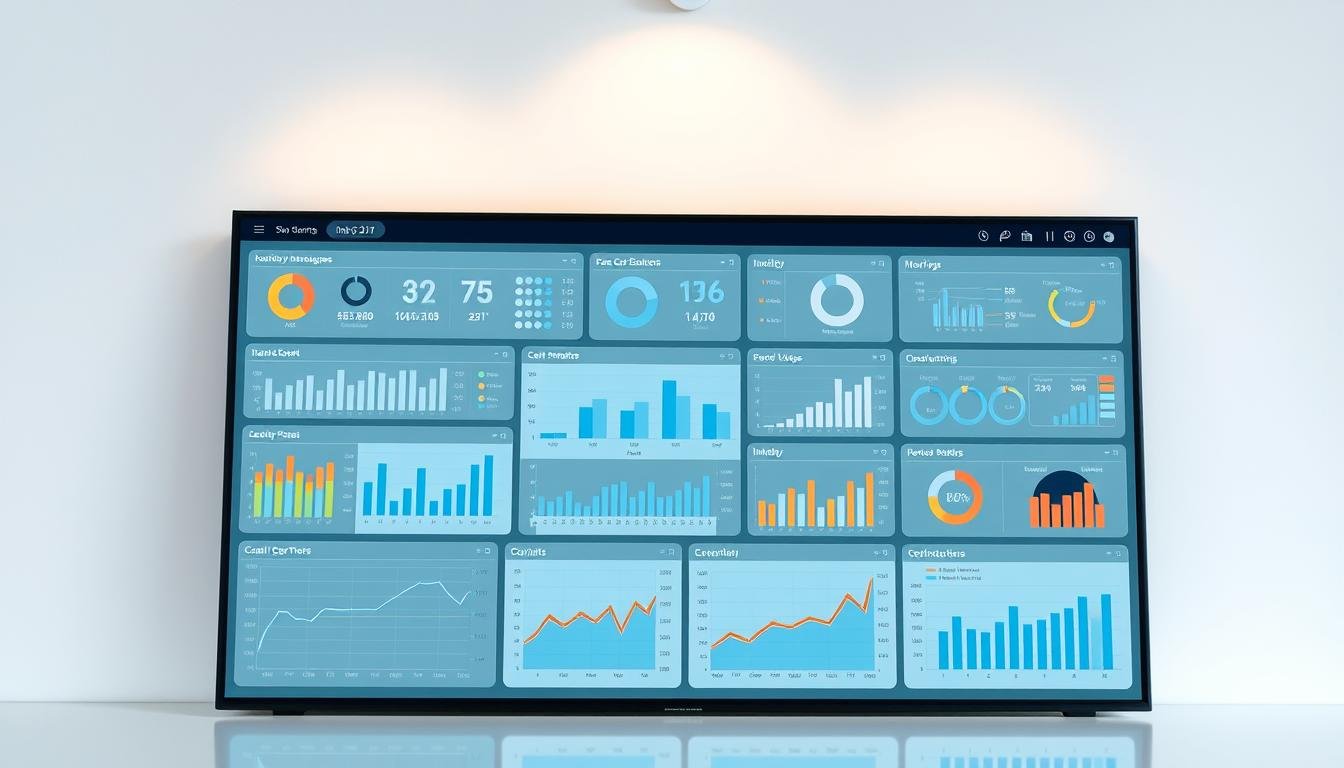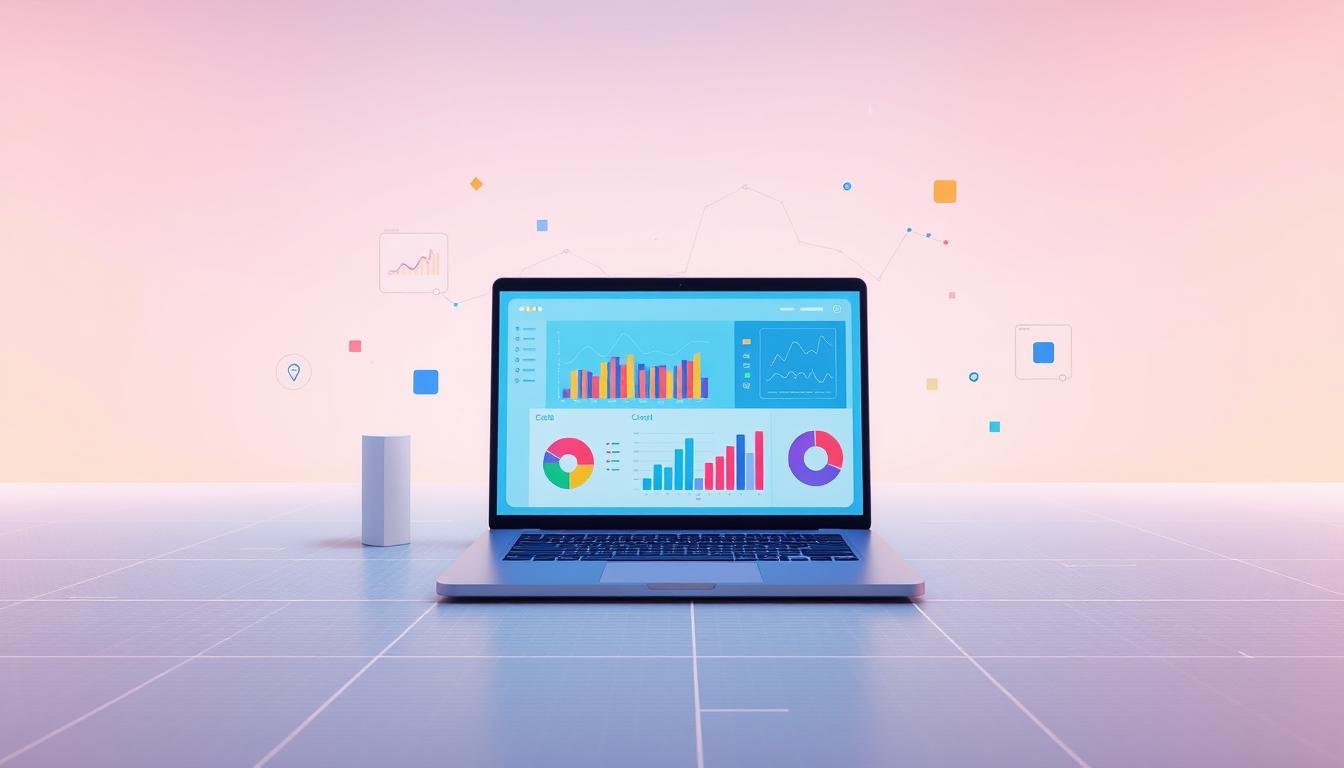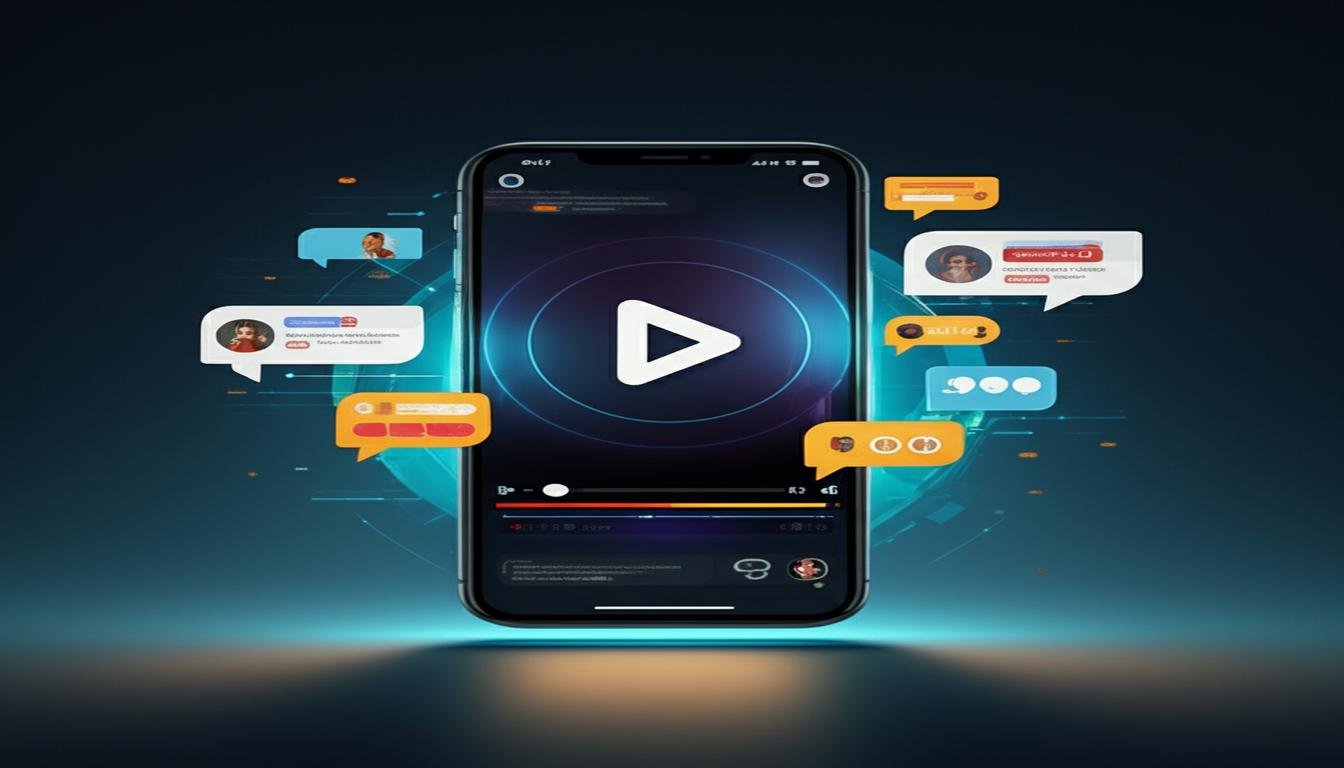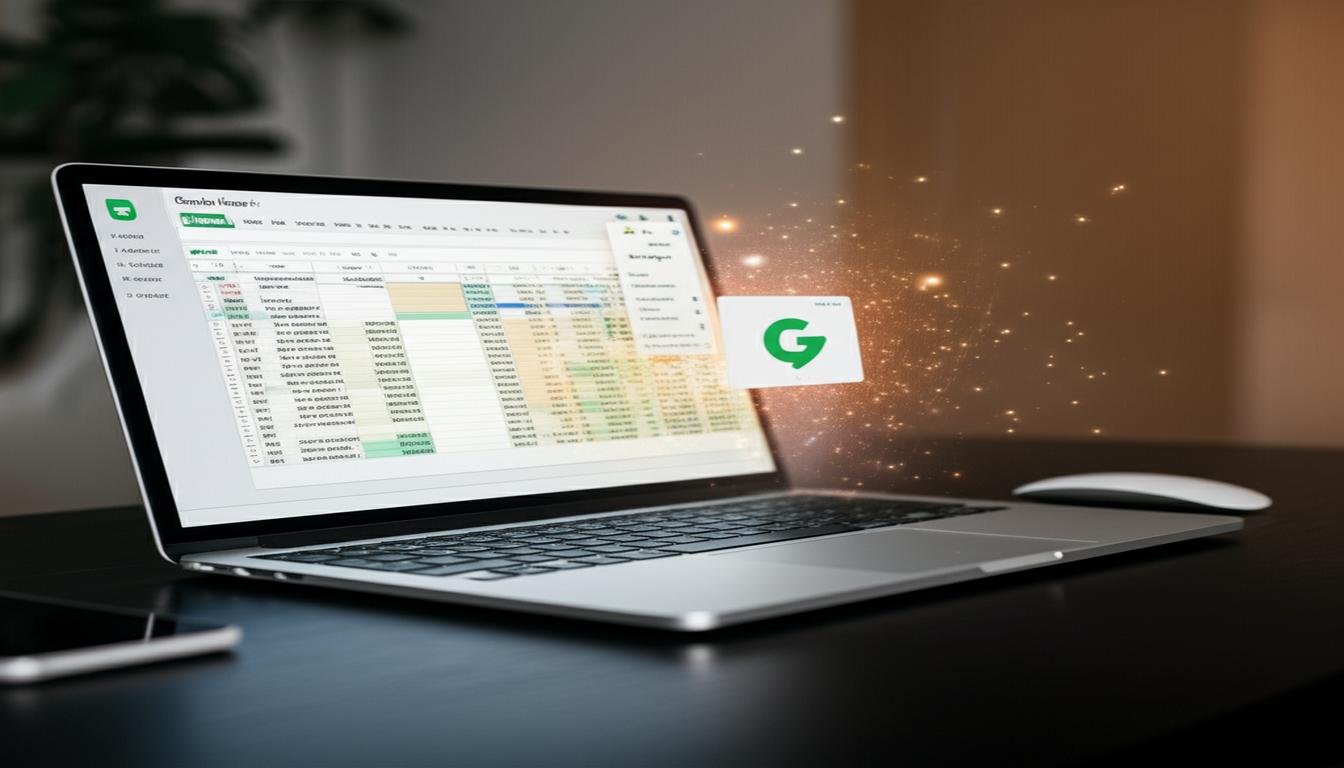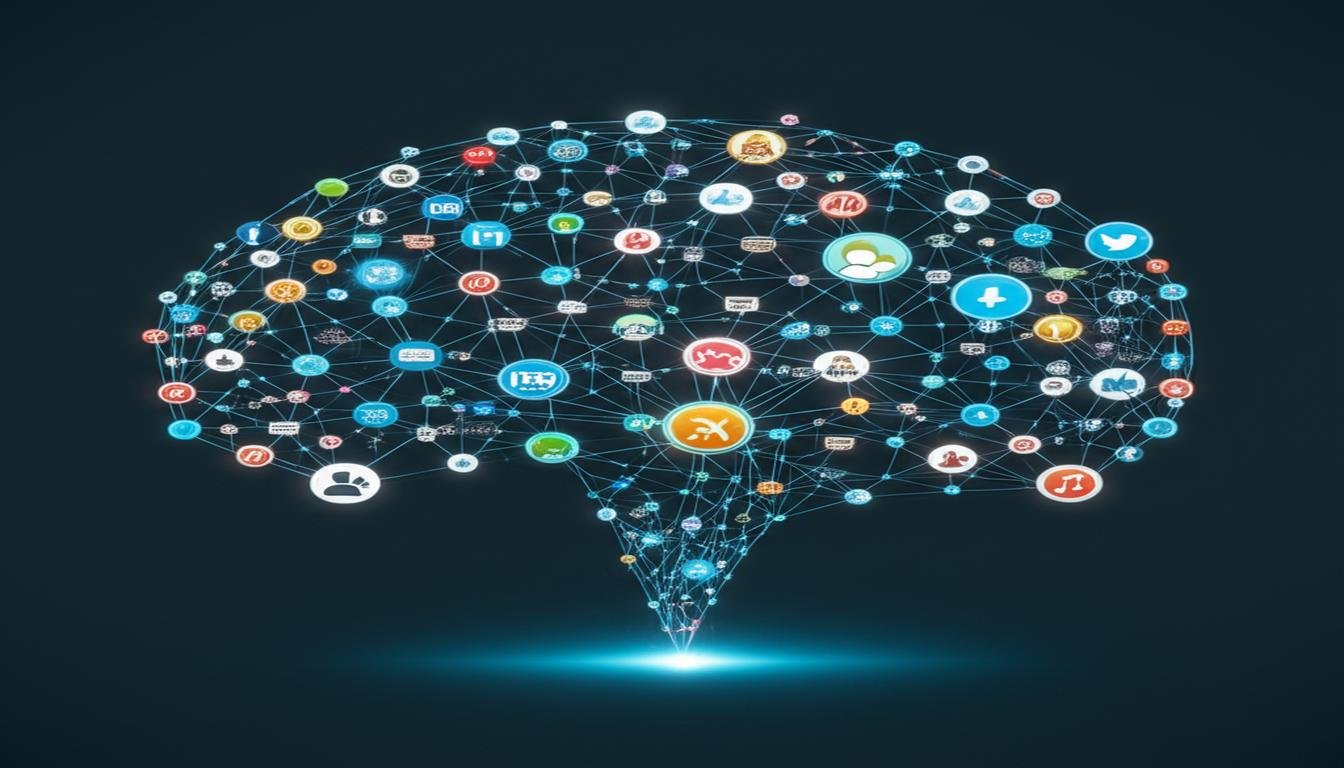Do you feel lost in a sea of data but want clear insights? The world of AI data visualization tools is changing how businesses see complex data. It turns numbers into stories that help make big decisions.
I’ve seen a big change in data analysis. AI tools are now key for businesses to find hidden data value. They help unlock what’s in the data.
Today, businesses make a lot of data every day. Old ways of analyzing data can’t find all the patterns. AI tools help by showing data in smart, moving ways. They show things humans might miss.
Table of Contents
Key Takeaways
- AI visualization tools convert complex data into understandable visual narratives
- Machine learning algorithms enhance data interpretation accuracy
- Real-time insights drive faster business decision-making
- Visualization tools reduce cognitive load in data analysis
- Artificial intelligence enables predictive and prescriptive analytics
Understanding AI-Driven Data Visualization
Data visualization has changed a lot with AI. Now, businesses can understand complex info better. I’ll show you how AI makes data visualizations better than before.
AI has changed how we see data. It uses smart algorithms to find patterns we couldn’t see before.
The Evolution of Visualization Tools
Old data tools were not very good. AI has made them smarter. Now, they can:
- Find patterns on their own
- Process data fast
- Make predictions
- Show data in new ways
How AI Transforms Data Analysis
AI tools use machine learning for better insights. They can predict trends and find odd things that old methods missed.
Core Components of AI Visualization
The best AI tools have three key parts:
- Machine learning algorithms
- Natural language processing
- Advanced predictive analytics
Together, these parts help AI tools understand data better. This lets businesses make smart choices fast.
The Power of AI in Modern Data Analytics
AI has changed how we look at data. It makes complex info easy to understand. Now, we get insights we couldn’t before.
Data tools with AI are making business smarter. They can look through huge amounts of data fast. They find things we might miss.
- Rapid pattern recognition
- Automated anomaly detection
- Predictive forecasting capabilities
- Real-time data interpretation
AI makes hard data easy. Smart algorithms turn data into clear pictures we can act on right away.
| AI Analytics Capability | Business Impact |
|---|---|
| Pattern Recognition | Faster strategic decision-making |
| Predictive Modeling | Improved forecasting accuracy |
| Automated Insights | Reduced manual analysis time |
Companies using these tools get a big advantage. They make better choices faster. They stay on top of trends.
Best AI Data Visualization Tools
Finding the right ai data visualization tools is key. Today’s businesses need tools that make complex data easy to understand. They should work fast and well.
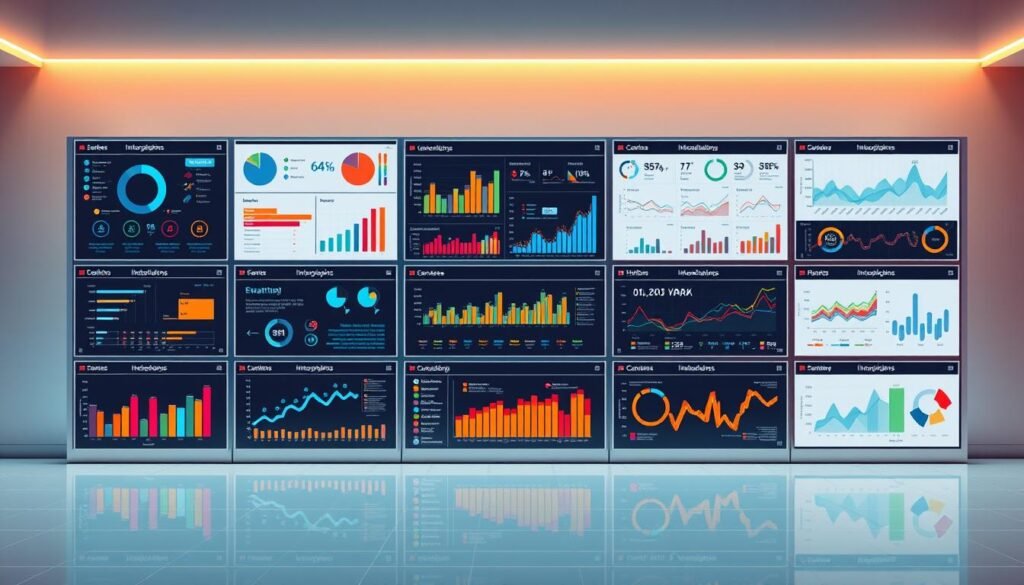
I looked at many ai visualization tools. I want to show you what makes each one special. The right tool can change how companies use their data.
Selection Criteria for AI Visualization Tools
When picking ai data visualization tools, look at these things:
- User interface intuitiveness
- Advanced machine learning capabilities
- Real-time data processing
- Scalability and flexibility
- Cost-effectiveness
Performance Metrics That Matter
Great ai visualization tools stand out in several ways:
| Metric | Importance | Evaluation Criteria |
|---|---|---|
| Processing Speed | High | Milliseconds per data point |
| Insight Accuracy | Critical | Machine learning prediction precision |
| Visualization Quality | Essential | Clarity and interpretability |
Integration Capabilities
It’s important for ai data visualization tools to work well with other systems. I look for tools that fit smoothly into current data setups. This makes work flow better and keeps things running smoothly.
“The best visualization tool doesn’t just display data—it tells a story.” – Data Science Expert
Choosing the right ai visualization tool can turn raw data into useful insights. This helps companies make smart choices based on data.
ThoughtSpot: AI-Powered Analytics Platform
I’ve seen how AI changes data visualization. ThoughtSpot is a top platform that changes how companies use their data.
ThoughtSpot made data easy to understand with a search-first approach. Users can ask questions and get smart, AI-made charts right away. The AI gets better with each use, giving deeper insights into data.
- Intuitive search-driven interface
- AI-powered insight generation
- Adaptive learning capabilities
- Complex data relationship analysis
ThoughtSpot is great at making complex data easy to see. It uses AI to understand big data, helping everyone see the big picture.
ThoughtSpot turns data into useful insights fast and accurately.
Many companies use ThoughtSpot to make data easy for everyone. This helps them make quick decisions and find new insights that others miss.
Julius AI: Specialized Data Analysis Solution
In the fast-changing world of data tools, Julius AI is a top choice. It makes complex data easy to understand. Unlike other AI chatbots, it focuses on analyzing data deeply.
Innovative Features for Advanced Analysis
Julius AI is special because of its advanced features. It helps users explore data in new ways:
- Advanced machine learning algorithms
- Real-time data processing
- Intuitive visual interface
- Customizable dashboard design
Practical Applications Across Industries
Julius AI is great for many fields. It helps businesses find important insights in big data.
| Industry | Key Use Case |
|---|---|
| Finance | Risk assessment and predictive modeling |
| Healthcare | Patient trend analysis |
| Marketing | Consumer behavior prediction |
Flexible Pricing Options
Julius AI has prices for all kinds of businesses. It’s affordable for startups and big companies alike. This means everyone can use its advanced features.
“Julius AI transforms raw data into actionable intelligence with unprecedented ease and precision.” – Tech Innovation Review
Julius AI combines smart AI with easy-to-use design. It’s the future of data tools, making hard analysis simple for everyone.
Claude: Conversational Data Visualization
Claude is a new way to look at data. It’s a tool that makes talking to data easy. This tool uses special tech to understand what we say.
Claude is special because it lets us talk to data in our own words. This makes it easy to understand complex data. It’s like having a conversation with your data.
- Natural language data exploration
- Complete React code generation
- Intelligent visualization recommendations
- Contextual understanding
This tool helps developers and scientists make custom visualizations. It gives them all the code they need. This makes it easy to change and add to the graphics.
| Feature | Claude Capability |
|---|---|
| Language Processing | Advanced NLP for data queries |
| Code Generation | Automatic React visualization code |
| Customization | Flexible visualization design |
Claude is the future of talking to data. It keeps track of what we say and explains things. It’s not just a tool, it’s a teacher for data analysis.
Zoho Analytics: Enterprise-Grade Visualization
Zoho Analytics is a top choice for businesses looking for great data tools. It’s affordable and offers top-notch analytics.
Zoho Analytics makes complex data easy to understand. It uses the latest tech to help all kinds of businesses. And it does it all at a price that’s easy on the wallet.
Zia AI Assistant: Intelligent Data Companion
Zia is the brain behind Zoho Analytics. It’s an AI that makes understanding data easier. Zia can:
- Understand what you say
- Find important insights for you
- Give you tips on what to do next
Dashboard Customization Options
Zoho Analytics lets you make dashboards your own. You can create:
- Dashboards that match your brand
- Widgets that show data in cool ways
- Reports that are just right for you
Seamless Integration Capabilities
Zoho Analytics is great at working with other tools. It connects easily with many systems:
| Integration Type | Supported Platforms |
|---|---|
| Cloud Services | Google Workspace, Microsoft 365 |
| Database Connections | MySQL, PostgreSQL, Oracle |
| CRM Systems | Zoho CRM, Salesforce |
Zoho Analytics is a smart choice for businesses. It offers smart tools and good prices. This makes advanced analytics available to everyone.
Infogram: Professional Data Storytelling
I found a great tool for telling data stories. Infogram is amazing for making data look good. It helps professionals make cool graphics and reports easily.
Infogram does more than just charts. It makes complex data easy to see. Its smart engine picks the best way to show your data.
- Intelligent chart recommendations
- Extensive template library
- Drag-and-drop interface
- Interactive infographic creation
What makes Infogram special is how it helps tell stories with data. It offers:
| Feature | Benefit |
|---|---|
| Advanced Design Options | Customizable visual styles |
| Team Collaboration | Real-time project sharing |
| Data Import | Seamless spreadsheet integration |
Many businesses use Infogram to make data easy to understand. It’s great for marketers, analysts, and researchers. This tool helps share insights clearly.
Infogram turns data into stories that everyone can understand.
Infogram mixes smart tech with easy design. It changes how we see and tell data stories.
Also learn about AI Excel Formula Generator.
Datapad: Real-Time Monitoring Solutions
Datapad is a top choice for businesses wanting to watch their data closely. It makes complex data easy to understand. This helps teams of all levels work with ai data tools.

Datapad makes data analysis simple. It uses smart ai and easy design. This gives businesses quick insights they can use.
Anomaly Detection Features
Datapad’s best part is finding odd data patterns. It uses smart ai to:
- Spot unusual data patterns right away
- Send alerts for big changes
- Give details on what’s different
Automated KPI Tracking
Datapad changes how we watch performance. It tracks important numbers automatically. This keeps businesses on top of their key goals without needing to check manually.
Collaboration Tools
Datapad also helps teams work together. It works well with Slack. This lets teams:
- Share data in real-time
- Set up alerts just for them
- Work together on dashboards
Datapad gives teams the info they need fast. This changes how teams use data. It makes ai data tools powerful and easy to use.
Security and Compliance Considerations
When looking for the best ai for data visualization, security is key. Keeping business secrets safe needs a strong plan for data protection and following rules.
For data visualization with ai, companies must check the security features. The top ai visualized tools have strong protection to keep data safe and private.
- Advanced user authentication mechanisms
- Role-based access controls (RBAC)
- End-to-end data encryption
- Compliance with industry standards
Important security points for AI data visualization tools are:
| Security Feature | Description | Importance |
|---|---|---|
| Multi-Factor Authentication | Requires multiple verification steps | High |
| Data Encryption | Protects data in transit and at rest | Critical |
| Compliance Certifications | GDPR, HIPAA, SOC 2 compliance | Essential |
Choosing an AI visualization tool means understanding its security well. I suggest companies do deep security checks. This includes asking vendors lots of questions and looking at risks closely.
Security is not an afterthought but a fundamental requirement in modern data visualization solutions.
By focusing on strong security, businesses can use AI data visualization tools safely. They can be sure their important data stays safe during the analytics process.
Implementation Best Practices
Putting data visualization tools into action needs careful planning. My experience shows that using AI tools well is more than just installing software.
When you start using new tools, focus on a few key things:
- Make sure it fits with your business goals
- Train your team well
- Do it step by step
- Get your data ready and connect it well
First, check how your data works now. Know your data setup to spot any problems with new tools. Start with a small test to see how it works without messing up your main work.
Getting everyone on board is important. Make a plan to teach your team about the new tools. This way, they’ll see the value and use them more easily.
- Make learning plans clear
- Have hands-on training sessions
- Keep support going
- Watch how well people use it
It’s key to see if it’s worth it. Set up ways to measure how well the tools are doing. Look at things like how much time you save, new insights, and better decisions.
Success isn’t just about the tech. It’s about helping your team make smart choices with data.
Future Trends in AI Visualization
Data visualization is changing fast with AI. It’s making big changes in how we understand data. The best tools are making complex data easier to see.
The future of data tools will change how we analyze things. AI tools are getting smarter. They can now predict and share insights on their own.
Emerging Technological Frontiers
AI visualization will bring new things:
- Immersive augmented reality data experiences
- Advanced natural language processing interfaces
- Predictive analytics with enhanced accuracy
- Personalized data storytelling techniques
Predicted Industry Transformations
AI will change many areas:
- Healthcare: Personalized treatment prediction models
- Finance: Real-time risk assessment visualization
- Marketing: Hyper-targeted consumer behavior insights
- Manufacturing: Predictive maintenance dashboards
“AI visualization represents the next quantum leap in data intelligence” – Tech Innovation Review
These changes will make data easier to use. They will help many areas work better together.
Conclusion
AI has changed how we see data. Now, interactive tools are key for businesses. They help find deep insights in data.
I looked at top data tools and saw big changes. These tools do more than just show charts. They turn numbers into stories. Tools like ThoughtSpot and Zoho Analytics help find patterns fast and right.
Choosing the right tool is important. You need to think about your needs, data, and who will use it. The best tools mix smart AI with easy design. This makes working with data easy.
The future of business is in clear insights from data. AI tools are more than just tech. They help make big decisions from data.
FAQ
What are AI data visualization tools?
AI data visualization tools turn complex data into easy-to-understand visuals. They use smart algorithms to find patterns and suggest the best ways to show data. This makes it easier for people to get insights from big datasets.
How do AI-powered visualization tools differ from traditional data visualization methods?
AI tools can find patterns and insights on their own. They work with big datasets and offer interactive experiences. This is different from old methods that need manual effort.
What industries can benefit from AI data visualization tools?
Many industries can use AI data visualization tools. This includes healthcare, finance, and education. These tools help make smart decisions and find hidden insights.
What key features should I look for in an AI data visualization tool?
Look for tools that can understand natural language and find insights automatically. They should be easy to use and work well with big datasets. Also, check if they offer customization and are secure.
Are AI data visualization tools secure for sensitive business information?
Yes, good AI tools keep your data safe. They use strong security features and follow important rules like GDPR. Always check a tool’s security before using it.
How much do AI data visualization tools typically cost?
Prices vary based on what the tool can do. Some are free, while others cost a lot. The cost depends on how many users you need and what features you want.
Do I need technical expertise to use AI data visualization tools?
Many tools are easy to use, even for those without tech skills. They have simple interfaces and can understand natural language. But, some advanced features might need some knowledge.
Can AI data visualization tools integrate with existing business systems?
Yes, most tools work well with other systems. Check if they match your current setup and can easily import data.
What are the future trends in AI data visualization?
New trends include using virtual reality and better natural language processing. We’ll also see more personalized analytics and real-time collaboration. The field is getting more advanced and interactive.
How can I successfully implement an AI data visualization tool in my organization?
Start by setting clear goals and choosing a tool that fits your needs. Prepare your data and train your team. Start small and grow as you learn. Always be ready to adapt and improve.



